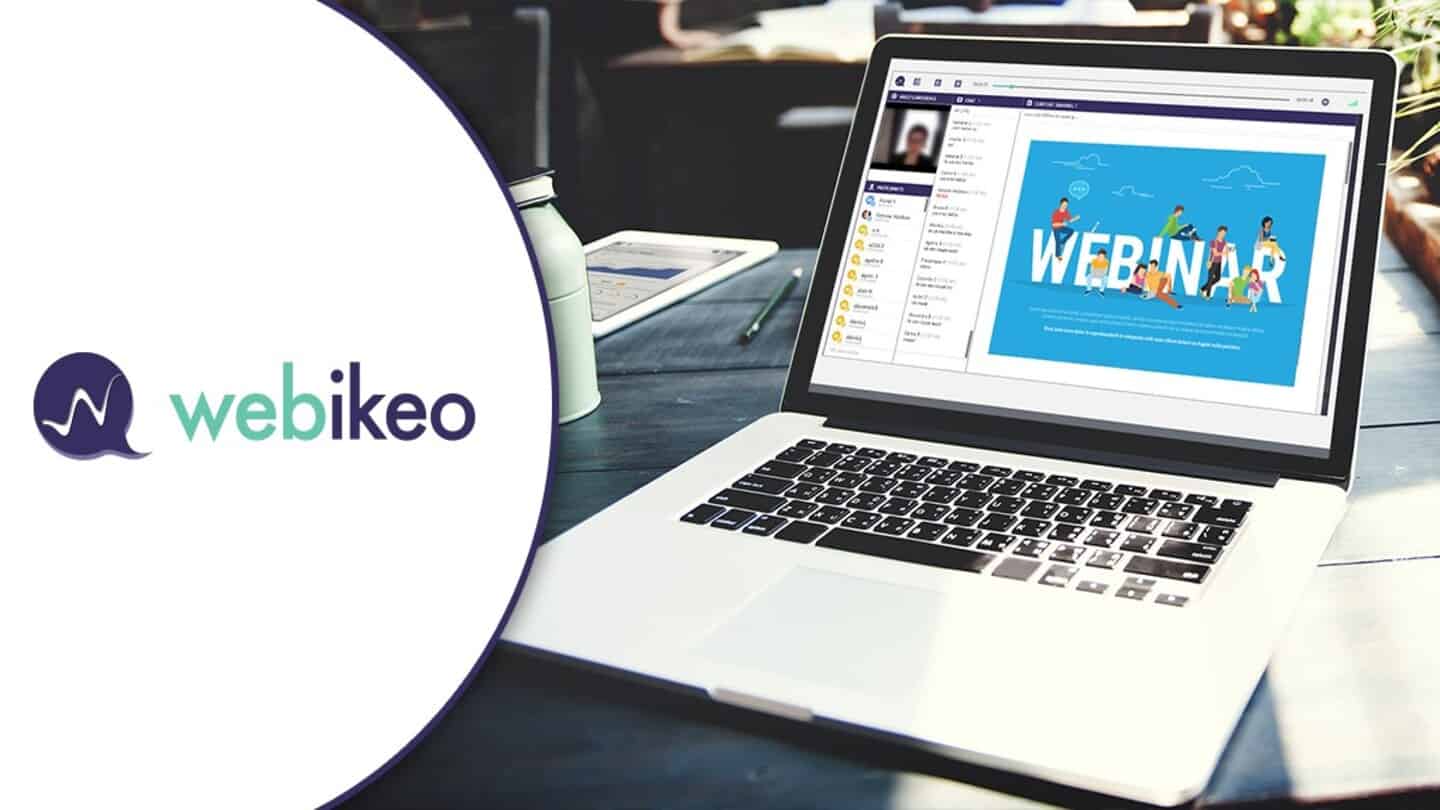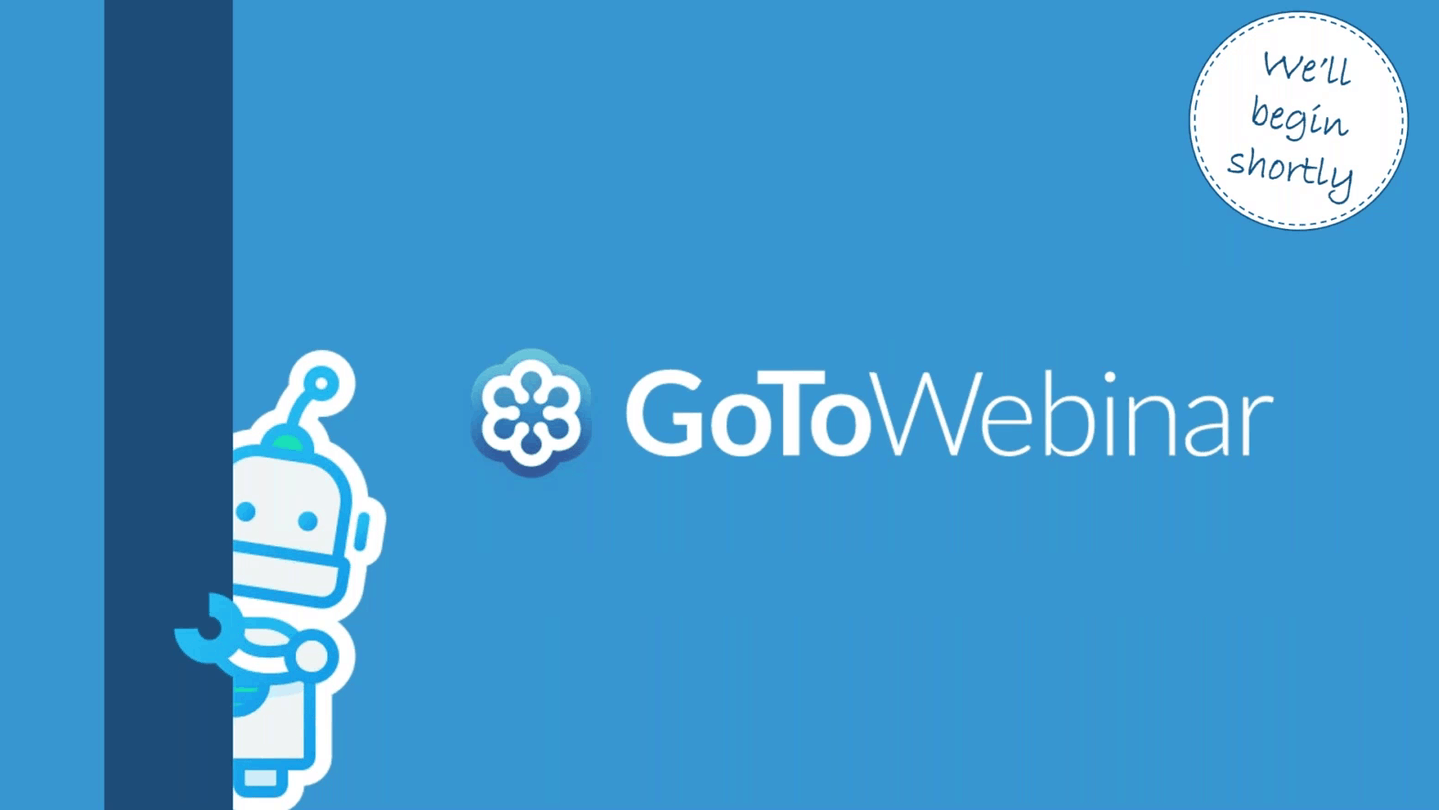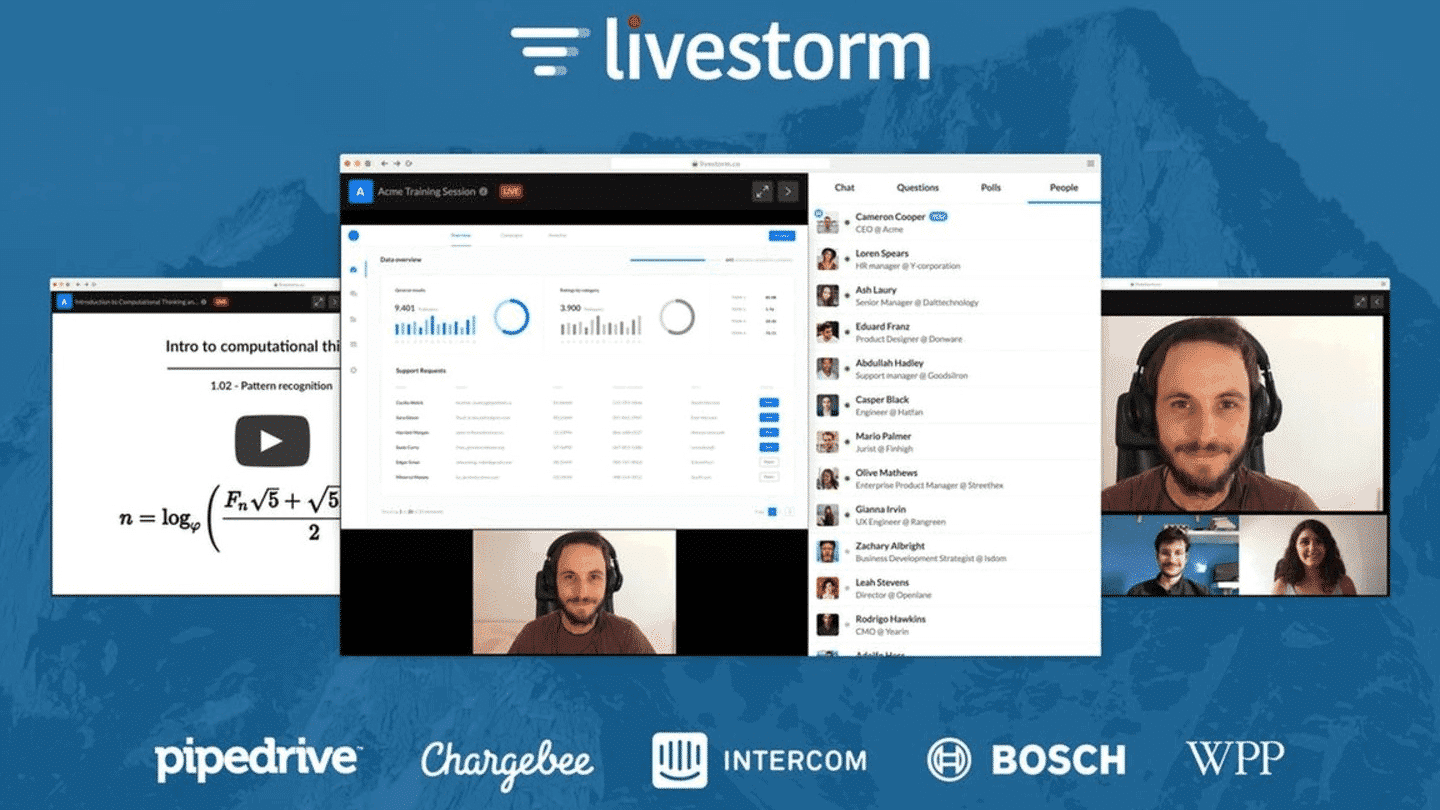Webinars
Webinars are a powerful way to communicate with a target audience. They have grown particularly fast in 2020 following the COVID-19 health crisis and have become a real pillar in any B2B marketing strategy to generate leads, convert a pipeline, or create more engagement in lead nurturing sequences.
Webinars can be used at any stage of a client’s life: they are very high value-added content and very popular with B2B clients.
Even at the end of a customer’s life cycle, you can use it to build loyalty and encourage referrals.
But a good webinar must be prepared in advance: if you want to get the most out of it, you must identify your objectives and your target audience precisely in order to meet their expectations. How can you make the most of webinars to acquire and retain leads? The answer in this complete guide.
Before going any further
Our webinar platform recommendations:
Use webinars to generate leads
Webinars are a very effective lead generation technique: you offer very high value-added content to prospects while showing them the benefits of your solution. Especially since a good webinar allows you to position yourself as an expert on a subject and thus show your leads that you are the right person to solve their problems.
Going further
- How to Generate Leads through Webinars?
- Examples of Webinars that work
- Webinar Software Comparison
- Generate Ultra-Qualified Leads withDrift’s example
You can organize several types of webinars depending on your objectives: educational content, macro topics, etc. – Think with all your teams about the subject on which you can bring the maximum added value.
For example, a discussion between expert partners can give credibility to your offer by putting forward the opinion of third parties. Partner” webinars, with another similar company in the same sector of activity (if possible complementary) allow to share audiences but also to highlight complementary services and generate more business.
Going further
All about lead generation:
- The Lead Generation Guide
- The Lead Generation Tools Comparison
- The Best Lead Generation Strategies
- Lead Generation Statistics
- Examples of Content Marketing that Work
Use webinars to handle less important leads
It’s a bit more complex, but there are always leads that don’t have enough potential to be prioritized by sales teams. A sound business strategy is to ignore them completely.
In the first instance, you should not treat them the same way you treat high-potential leads – it is much more costly in terms of energy and time spent for the organization than the potential gain they represent.
But after a while, the growth potential on the leads that we know how to handle runs out of steam, and we start looking for opportunities elsewhere, and these leads that we don’t handle come back every year as an option – usually pushed by marketing teams that are a little frustrated with generating leads that are never handled.
Webinars can be an interesting compromise to handle these leads – instead of a one-on-one demo call, we offer asynchronous videos, or webinars for prospects to ask all their questions, etc.
It also allows you to qualify your prospects by letting them interact with the speaker to better understand their expectations.
Going further
Become a qualification expert:
- The Guide to Commercial Qualification
- All about Lead Qualification: MQL or SQL?
- Aligning Sales with Marketing
For these types of prospects, don’t hesitate to offer case studies, a very effective format to move them through the conversion funnel. Showing and explaining the success of your own customers helps you gain credibility – especially if they can speak up and defend your solution themselves.
Use webinars for onboarding and initial training
Unlike the webinars mentioned above, this type of webinar is primarily for your new customers – but can also be used for prospects you are trying to convert, showing them the full value of your product. Take care to adapt the webinar format to the status of your audience: prospects, leads, customers, etc.
For your customers, it is an opportunity to understand all the features of your service in a more human integration process than a simple manual or online tutorial. This ensures better retention and reduced churn.
On your end, webinars allow you to interact with large groups of prospects and customers, thus easing the burden on your customer service team – all while creating a training and marketing medium that can be reused and thus pay for itself.
Going further
Become an onboarding pro:
- How to Measure Customer Satisfaction?
- The Best Customer Success Tools
- Sample Welcome Emails
Use webinars to build loyalty and referrals
With these webinars, we go even further than onboarding and initial training: the goal is to help your existing customers get the most value out of your product and turn them into “power users” – even to catch up with customers who have drifted away.
This can take the form of secondary onboarding, to encourage your customers to update their plan and upsell. For example, ActiveCampaign produces a webinar whenever they release a new feature. If you offer freemium plans, don’t hesitate to create webinars that show all the benefits of paid plans at the same time.
This type of webinar helps reduce the time to value (TTV), the time it takes for a customer to see the positive results of using your product and justify their investment. A good way to keep your customers loyal and to make sure they recommend you.
A tip: don’t hesitate to launch invitational webinars, which give your customers a sense of exclusivity.
You can also offer on-demand webinars: even if you can’t satisfy everyone, you can create pre-recorded webinars and send them to your customers.
Going further
Become an expert in customer retention:
- The Complete Guide to Customer Retention
- Calculate your attrition rate
- TheUpsell Bible
- The Best Customer Loyalty Tools
- All about B2B email campaigns
- Benchmark of emailing software







